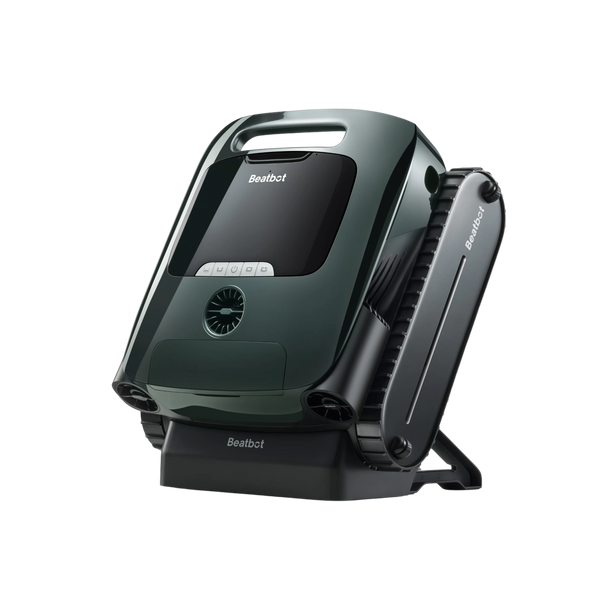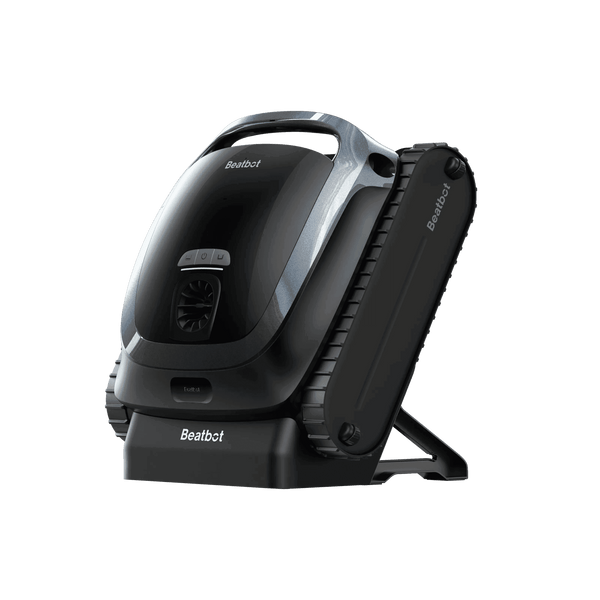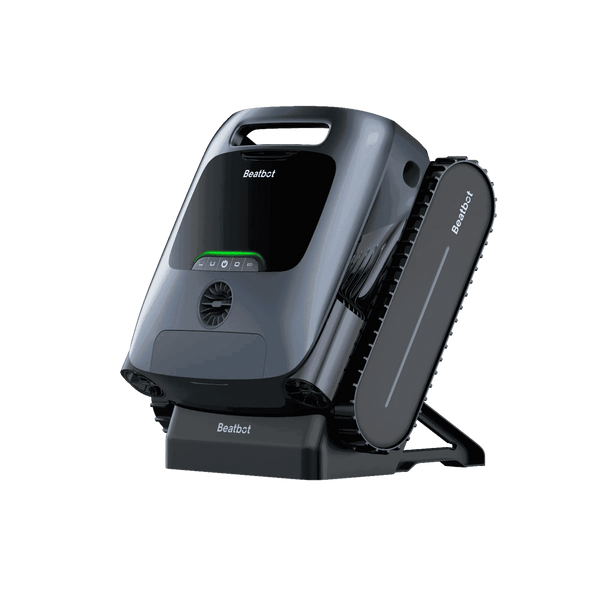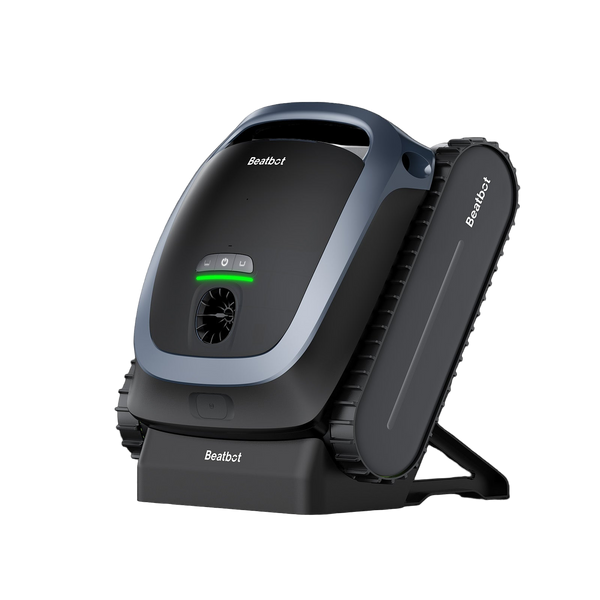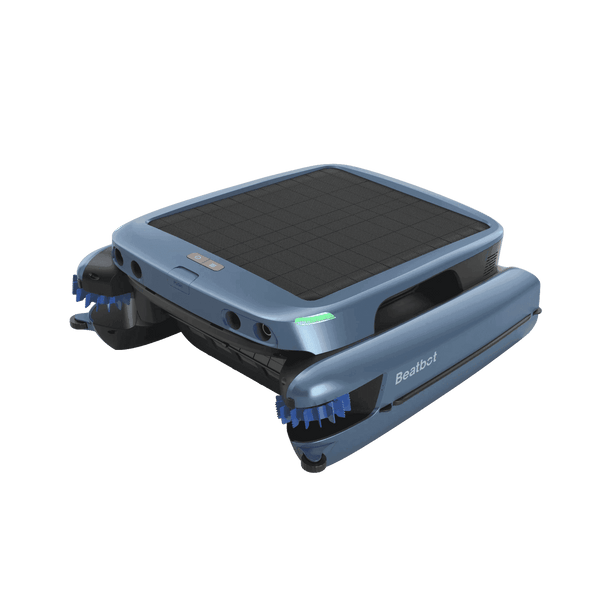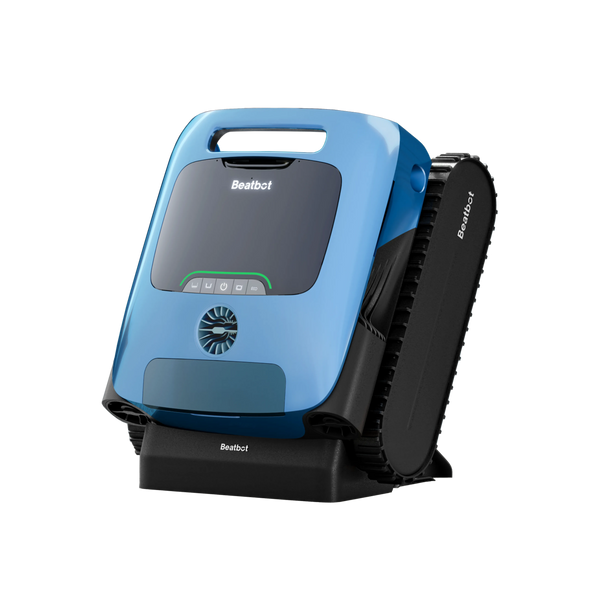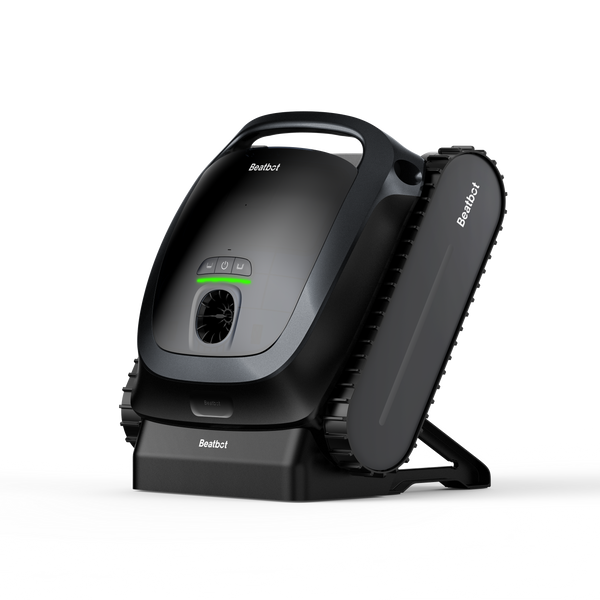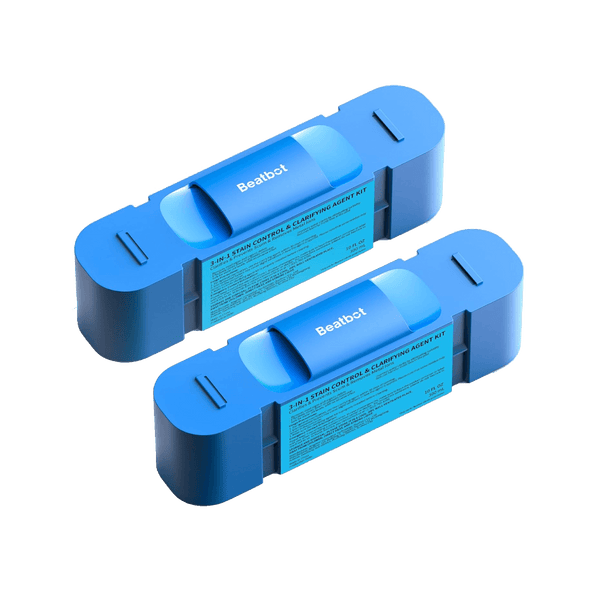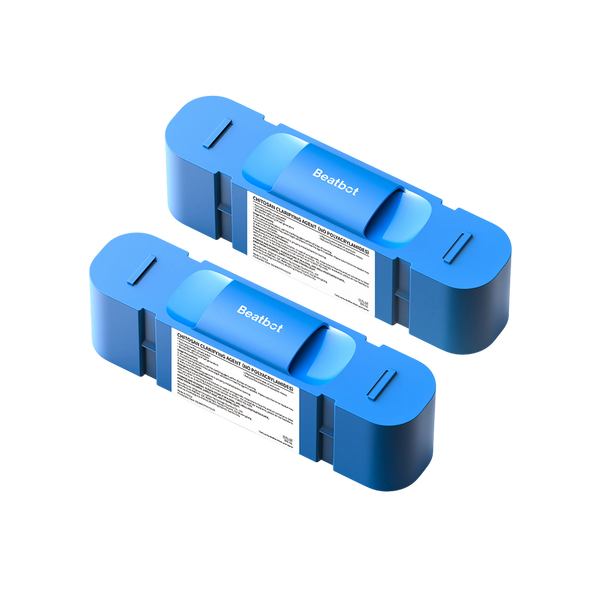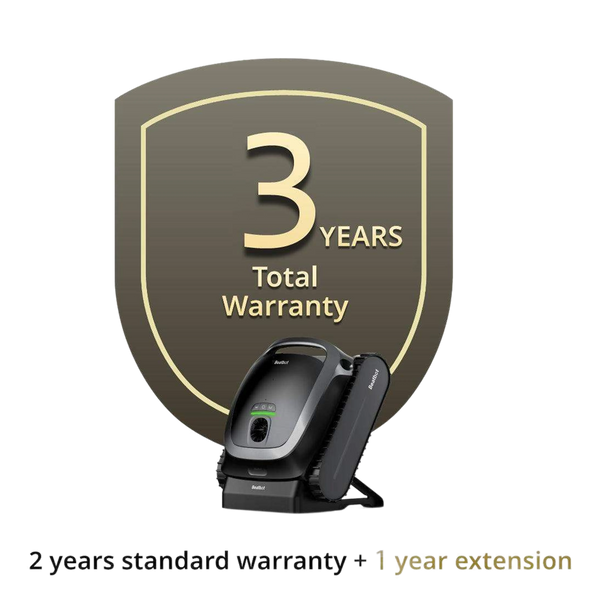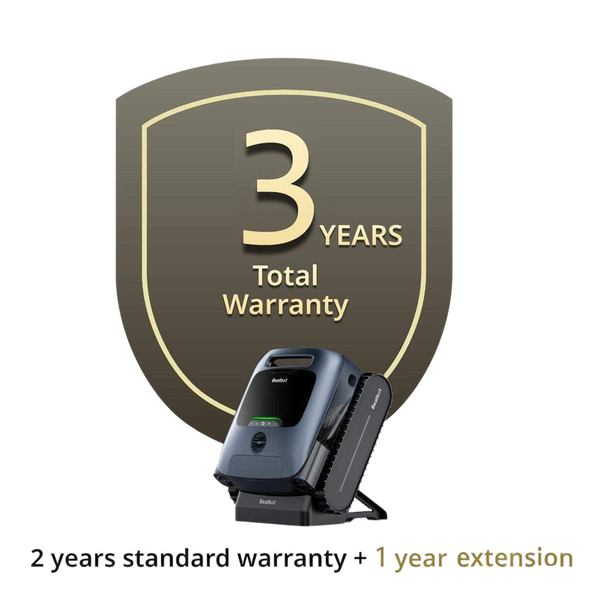Home > Blogs > A Guide to Recognizing and Responding Blue-Green Algae With Beatbot AquaSense 2 Ultra
A Guide to Recognizing and Responding Blue-Green Algae With Beatbot AquaSense 2 Ultra
2025-03-16
Blue-green algae, scientifically known as cyanobacteria, isn't actually algae at all. Despite its common name, this organism belongs to a group of bacteria that can photosynthesize like plants. These microscopic organisms thrive in warm, nutrient-rich water bodies including swimming pools, lakes, ponds, and even hot tubs. They form colonies that grow quickly under the right conditions, creating unsightly blooms that can range in color from blue-green to reddish-purple.
These bacteria have existed for billions of years and occur naturally in many water environments. However, their rapid growth becomes problematic when environmental conditions favor excessive blooming. Cyanobacteria produce various toxins that pose serious health risks to humans, pets, and wildlife. Understanding how to identify and address blue-green algae in your pool or nearby water sources helps protect your family and ensures safe swimming conditions.
Table of contents

Visual Identification Signs
Spotting blue-green algae starts with recognizing its distinct appearance. Unlike true algae that typically appears as green threads or films attached to surfaces, cyanobacteria often creates a different visual pattern. Most commonly, you'll notice a blue-green discoloration that resembles spilled paint floating on the water surface. In some cases, the bloom might look like pea soup or have a bluish tint.
The surface pattern changes with growth stages and environmental conditions. Fresh blooms may appear as small specks in the water, while mature blooms form thick, paint-like surface scums. Wind can push these surface accumulations to one side of the pool or pond, creating concentrated areas along shores or in corners. Sometimes the bloom sinks beneath the surface, making visual identification more challenging. The color can also vary significantly, appearing blue-green, bright green, brown, red, or even purplish depending on the specific species and conditions.
Texture and Growth Pattern
The texture of blue-green algae differs notably from regular pool algae. When you run your hand through water containing cyanobacteria, it feels slimy rather than stringy or hair-like. This sliminess comes from the gelatinous substance that surrounds the bacterial cells and helps them stick together in colonies.
Growth patterns also provide clues for identification. Blue-green algae often appears overnight with explosive growth, rather than the gradual buildup typical of true algae. You might check your pool one morning to find substantial areas covered by this bacterial bloom when no visible signs existed the previous day. The growth concentrates primarily at the water surface rather than clinging to walls or floors like common pool algae. This surface-floating tendency occurs because cyanobacteria can control their buoyancy using gas-filled cavities within their cells, allowing them to position themselves optimally for sunlight.
Distinctive Odor Characteristics
Your nose provides another valuable identification tool. Blue-green algae produces a distinctive, unpleasant odor often described as resembling rotting plants, freshly mown grass, or sometimes a septic smell. This odor becomes particularly strong when the bloom starts to die and decompose. The smell intensifies during decomposition as cells rupture and release their contents, including various volatile compounds.
In severe cases, this odor becomes detectable even before you notice visual signs of the bloom. If your pool or nearby water body suddenly develops an earthy, musty smell without visible contamination, consider testing for cyanobacteria. The intensity of the smell often correlates with the size and concentration of the bloom. Early detection through smell can help you address the problem before it becomes a major visual and health concern.
Health Risk Indicators
Symptoms of Exposure
Recognizing potential symptoms of blue-green algae exposure helps protect everyone who uses your pool. Contact with cyanotoxins can cause various health problems depending on the type of exposure and the specific toxins present. Skin contact typically produces irritation, rashes, hives, or allergic reactions within hours. The affected skin may become red, itchy, and develop small blisters in severe cases.
Ingesting water containing blue-green algae poses more serious risks. Symptoms of ingestion include stomach cramps, vomiting, nausea, diarrhea, fever, headaches, and sore throat. These symptoms typically appear within hours of exposure and may persist for several days. Inhaling water droplets containing cyanotoxins during swimming or water activities can cause respiratory issues, including coughing, wheezing, chest tightness, and irritated eyes, ears, nose, or throat.
Pay special attention to these symptoms following water exposure, particularly if you've noticed visual or olfactory signs of possible cyanobacteria. Seek medical attention if symptoms appear severe or persist beyond a few hours, and inform healthcare providers about the potential blue-green algae exposure.
Testing and Confirmation Methods
While visual identification provides important clues, definitive confirmation requires testing. Several testing options exist, ranging from simple home test kits to professional laboratory analysis. Home test kits specifically designed for blue-green algae detection have become more available and affordable. These kits typically use antibody-based technology to detect common cyanotoxins and provide results within 30-60 minutes.
For more comprehensive analysis, collect a water sample in a clean container and contact your local health department or a private water testing laboratory. Professional testing can identify the specific cyanobacteria species present and measure toxin concentrations precisely. Some pool service companies also offer specialized testing for blue-green algae as part of their water analysis services.
When collecting samples, follow these guidelines for accurate results:
- Use clean, sterile containers
- Collect from areas showing visible signs of the bloom
- Keep samples cool but not frozen
- Deliver to testing facilities promptly
- Avoid contact with sample water during collection
Environmental Triggers
Understanding what causes blue-green algae blooms helps prevent their occurrence. Several environmental factors combine to create ideal conditions for cyanobacteria growth. High water temperatures above 75°F (24°C) dramatically increase growth rates, making summer months particularly problematic. This temperature sensitivity explains why blooms occur most commonly during hot weather periods.
Nutrient levels play a crucial role in bloom development. Cyanobacteria thrive in waters with elevated levels of phosphorus and nitrogen. These nutrients enter pools through various sources including fertilizer runoff, landscape debris, bird droppings, and even human contaminants like sunscreen, cosmetics, and body oils. Poor filtration or circulation systems that fail to remove these nutrients effectively create perfect conditions for blue-green algae proliferation.
Stagnant water significantly increases bloom risk. Without proper circulation, nutrients concentrate in specific areas, and oxygen levels become depleted, creating ideal conditions for cyanobacteria to outcompete other microorganisms. Pools with inadequate circulation systems, broken pumps, or inconsistent maintenance schedules become particularly vulnerable to blue-green algae outbreaks.
Immediate Response Actions
Closing the Affected Area
When you confirm or strongly suspect blue-green algae in your pool, immediate action becomes necessary. First, close the pool to all swimmers. Unlike regular algae problems that might be aesthetically unpleasant but relatively harmless, cyanobacteria poses genuine health risks. Place visible signs around the pool indicating closure due to water quality concerns and secure access points if possible.
Notify anyone who recently used the affected water about potential exposure and advise them to watch for symptoms. If your property includes a pond or natural water feature with blue-green algae, restrict pet access as well. Dogs particularly face severe risks from cyanotoxins when they drink contaminated water or lick their fur after swimming.
Contact your local health department to report the bloom, especially if it appears in a public water body or could potentially affect neighboring water sources. Many jurisdictions track blue-green algae outbreaks to identify patterns and protect public health.
Treatment Approaches
Treating blue-green algae requires specific approaches different from regular algae management. Standard chlorine shock treatments work against cyanobacteria, but require higher concentrations due to their protective cellular structures. The CDC recommends maintaining at least 1-3 ppm free chlorine levels in pools affected by blue-green algae. For severe blooms, specialized algaecides containing copper or peroxide compounds specifically formulated for cyanobacteria provide more effective control.
I've found that advanced robotic pool cleaners like the Beatbot AquaSense 2 Ultra dramatically improve treatment effectiveness when combating blue-green algae. The AquaSense 2 Ultra 's powerful filtration system captures cyanobacteria particles as small as 2 microns, physically removing them from the water rather than just killing them. This is crucial because dead cyanobacteria can still release toxins if left in the water.
What makes the Beatbot particularly effective against blue-green algae is its comprehensive cleaning approach. Its advanced ultrasonic sensing system allows it to methodically cover every inch of your pool, including the surface layer where cyanobacteria typically concentrate. Unlike basic pool cleaners that only handle the floor and perhaps walls, the AquaSense 2 Ultra cleans the floor, walls, waterline, and crucially, the water surface itself.
When I deployed the AquaSense 2 Ultra during a mild blue-green algae outbreak, I was impressed by how quickly it improved water clarity. The unit's powerful suction combined with its quad-brush system physically disrupted the bacterial colonies while its advanced filtration system removed the particles from the water. Using the Pro Mode setting allows for the most thorough cleaning, particularly important when dealing with potentially hazardous blooms.
Beyond chemical treatments, improve water circulation by running pool pumps continuously during treatment. Enhanced circulation helps distribute treatment chemicals evenly and disrupts cyanobacteria colonies. Clean filters frequently during treatment as they'll quickly become clogged with dead bacterial cells. After treatment, vacuum the pool thoroughly to remove settled debris and dead bacteria.
For natural water bodies like ponds on your property, professional assessment becomes essential. Treatment options vary based on the water body's size, use, and environmental factors. Professional solutions might include aeration systems, beneficial bacteria additions, or specialized chemical treatments designed for larger water features.

Prevention Strategies
Preventing blue-green algae outbreaks saves time, money, and protects health. Maintain consistent water chemistry with proper pH levels between 7.2-7.8 and adequate sanitizer levels at all times. Regular testing helps catch chemical imbalances before they create conditions favorable for cyanobacteria growth. During hot weather periods, increase testing frequency to at least twice weekly.
Ensure proper circulation throughout your pool by maintaining functional pumps and filters. Run circulation systems sufficiently long each day to turn over the entire water volume at least once. Consider adding supplemental circulation devices for pools with poor flow patterns or dead spots.
Minimize nutrient introduction by keeping your pool clean of debris, requiring swimmers to shower before entering, and maintaining adequate distance between pools and fertilized landscaping. Install proper drainage systems to prevent runoff from entering the pool during rainstorms. Consider using phosphate removers as part of your regular maintenance routine, especially during warm months when cyanobacteria risk increases.
When to Seek Professional Help
While many blue-green algae situations respond to proper home treatment, certain scenarios warrant professional intervention. Contact pool professionals immediately if:
- The bloom persists despite proper treatment attempts
- You observe unusually thick or widespread blooms
- Multiple people report symptoms after water exposure
- You lack the equipment or knowledge to properly test and treat
- The affected water connects to natural water bodies that could spread contamination
Professional services bring specialized equipment for testing and treatment, more potent treatment options not available to consumers, and experience identifying and addressing similar situations. They can also help evaluate your pool system to identify underlying causes that might make your water particularly vulnerable to future outbreaks.
For severe or recurring problems, consider consulting with professionals about structural or systemic improvements like upgraded filtration systems, automatic chemical controllers, or UV sterilization equipment. These investments often prove cost-effective compared to repeatedly treating serious blooms and provide additional water quality benefits beyond blue-green algae prevention.
Long-term Monitoring
After successfully addressing a blue-green algae outbreak, implement a monitoring strategy to prevent recurrence. Develop a regular inspection routine that includes checking for early visual signs of cyanobacteria and testing water chemistry parameters that influence its growth. Document your findings to identify patterns or seasonal vulnerabilities.
Consider investing in a digital monitoring system that continuously tracks key water parameters and alerts you to conditions favorable for cyanobacteria growth. These systems can monitor temperature, pH, chlorine levels, and sometimes even detect early stages of algae growth through optical sensing technologies.
Remain particularly vigilant during high-risk periods like extended heat waves, after heavy rainstorms that might introduce nutrients, or during periods of reduced pool use when maintenance might become less consistent. Early detection and prompt response to small blooms prevents their development into serious health hazards and maintains your pool as the safe, enjoyable environment it should be.

